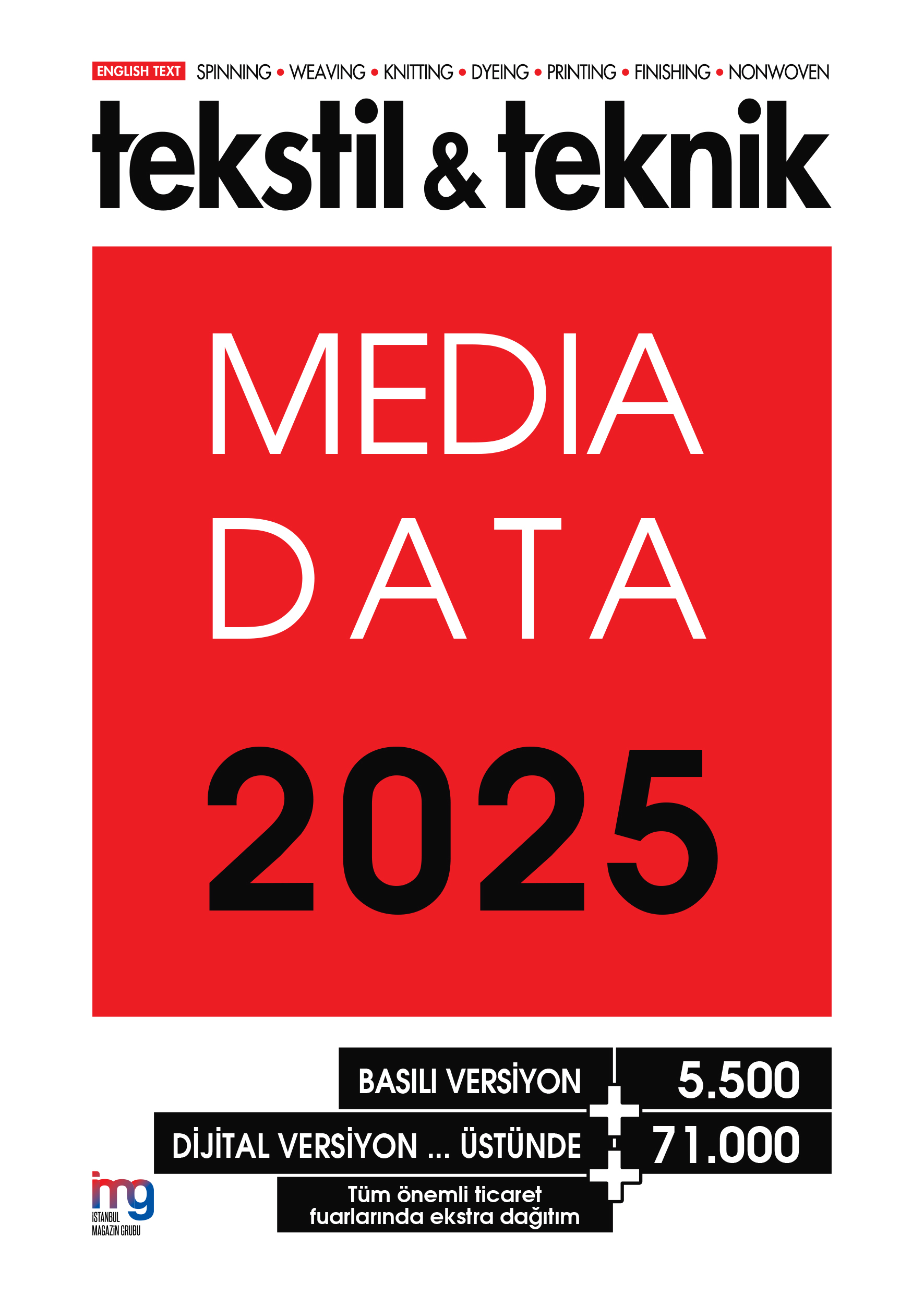Both an indispensable element of fashion and a driving force in the textile industry, denim has come under close scrutiny due to its production processes and chemical usage, making it a focal point in discussions around environmental sustainability. In Turkey and across the globe, the denim industry is being reshaped by eco-friendly technologies and smart production systems.
Denim is a type of fabric typically woven from cotton-based yarns, known for its durability, characteristic blue color, and twill weave structure. Although most commonly used for jeans, denim is also preferred for jackets, shirts, skirts, bags, and even home textiles. Its rugged texture, strength, and the aesthetic “worn-in” look it develops over time make denim stand out in terms of both fashion and functionality. More than just a fashion item, denim has now become a strategic segment in terms of environmental sustainability and technological transformation. Turkey holds strong potential to become a central player in this shift. With eco-friendly production techniques and innovative investments, the denim sector is opening a new chapter focused on both commercial success and ecological balance.
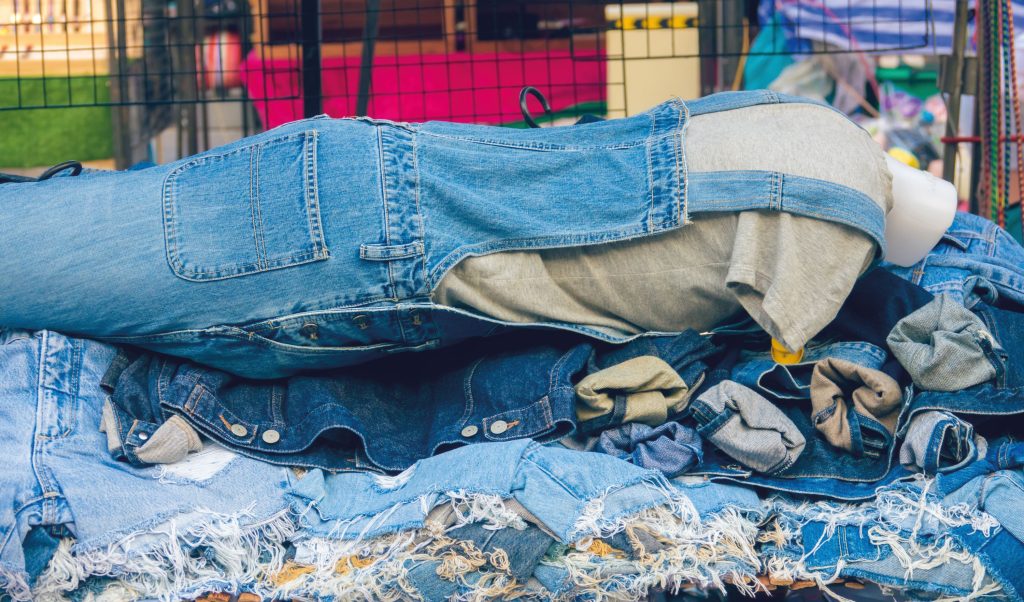
What does denim finishing ınclude?
Denim finishing encompasses all wet and dry processing stages that fabrics undergo before reaching the end user. These processes include washing, stonewashing, bleaching, fading, coating, distressing, dyeing, applying special effects, and drying. Finishing treatments not only give the fabric its visual appeal but also define its tactile properties.
Chemicals used in denim processing and their environmental ımpact
Chemicals used in denim finishing must be carefully evaluated due to their environmental impact. Key substances include:
- Sodium hydroxide (caustic soda): Swells the fibers to enhance dye uptake.
- Potassium permanganate: Common in fading and distressing processes, but toxic.
- Hypochlorite (bleach): Used for whitening but poses environmental and health risks.
- Enzymes: Serve as more eco-friendly alternatives; they soften and create abrasion effects by breaking down cellulose.
- Synthetic stones (perlite, cellulosic stones): Developed as alternatives to traditional pumice stones.
Releasing these chemicals into the environment without proper treatment can lead to water toxicity, loss of biodiversity, and serious health risks. In developing countries, where environmental management and wastewater treatment systems are often inadequate, denim production can cause significant ecological issues.
The denim ındustry in Turkey and worldwide
Global Market: Denim production is heavily concentrated in Asian countries. China, Bangladesh, Pakistan, and India rank among the world’s leading producers. Europe and the Americas, on the other hand, primarily import finished denim products.
Turkey: With its high-quality cotton production, technical know-how, and R&D investments, Turkey is a strong player in the denim industry. Ranked among the world’s top five denim fabric producers, Turkey is also recognized for pioneering sustainable manufacturing practices. Cities like Istanbul, Denizli, Kahramanmaraş, and Gaziantep are key production hubs in this field.
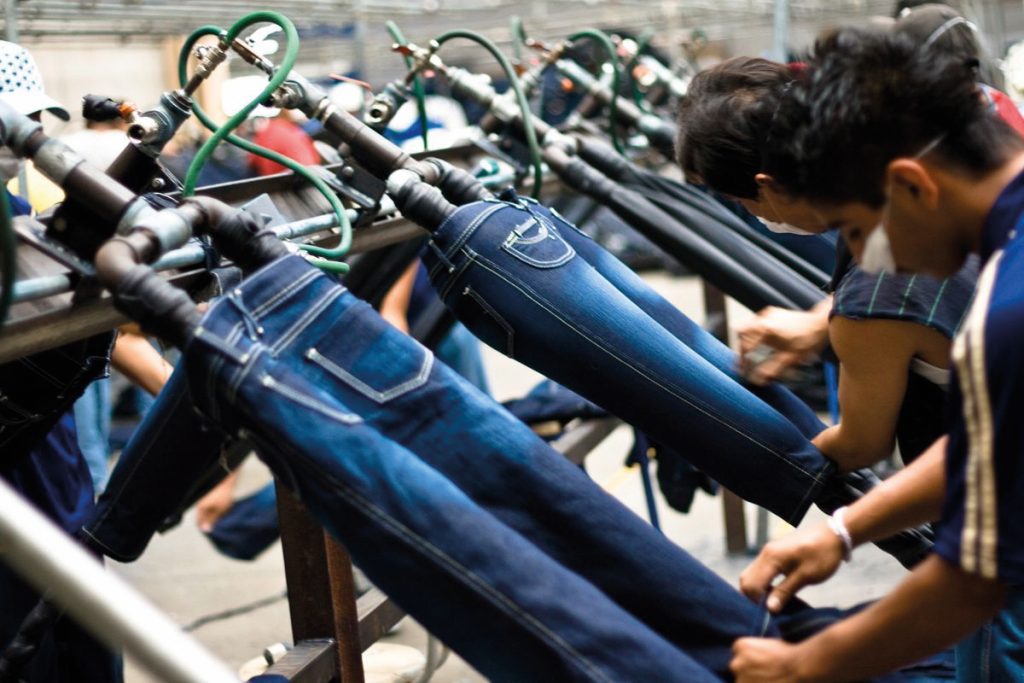
New Technologies and Sustainable Practices
To reduce environmental impact, the industry has embraced a variety of innovations in recent years. Key developments include:
- Ozone Technology
Developed to minimize chemical use in bleaching processes. Ozone gas can create light-wash effects without the use of water. - Laser Technology
An alternative to manual abrasion and sanding, this technology allows precise fading effects using laser beams and offers added benefits in occupational safety. - Enzyme-Based Washing
The use of biodegradable enzymes helps reduce both water consumption and chemical load. - E-flow and Nanobubble Systems
These technologies apply chemicals at the micro level, significantly cutting down water and energy usage. - Use of Recycled Fibers
By reusing cotton waste, manufacturers save raw materials and lower their carbon footprint.
The future of denim: Smart, ethical, and eco-designed
New-generation consumers demand not only stylish products but also those produced ethically and sustainably. This shift compels denim manufacturers to embrace “clean production,” “transparent supply chains,” and “eco-labeling.” At the same time, digital transformation tools such as digital twins, 3D simulations, and AI-powered quality control systems are expected to play a vital role in the future of the denim industry.
***
Denimin dönüşümü: Sürdürülebilirliğe doğru yolculuk
Hem modanın vazgeçilmezi hem de tekstil endüstrisinin dinamosu olan denim, üretim süreçleri ve kimyasal kullanımı nedeniyle çevresel sürdürülebilirlik açısından yakın takibe alınan bir segment haline geldi. Türkiye ve dünyadaki denim sektörü, çevre dostu teknolojiler ve akıllı üretim sistemleriyle yeniden şekilleniyor.
Denim, genellikle pamuk bazlı ipliklerden dokunan, dayanıklı, genellikle mavi renkli ve dimi dokuma yapısıyla bilinen bir kumaş türüdür. En yaygın kullanım alanı kot pantolonlar olsa da, ceket, gömlek, etek, çanta ve hatta ev tekstili ürünlerinde bile tercih edilmektedir. Denim, sert dokusu, sağlamlığı ve yıllar içinde kazandığı estetik “eskitme” görünümüyle hem moda hem de işlevsellik açısından öne çıkar. Denim sadece bir moda ürünü değil, aynı zamanda çevresel sürdürülebilirlik ve teknolojik dönüşüm açısından da stratejik bir tekstil segmenti haline gelmiş bulunuyor. Türkiye, bu dönüşümün merkezinde yer alma potansiyeline sahip. Çevre dostu üretim teknikleri ve yenilikçi yatırımlarla denim sektörü, hem ticari başarı hem de ekolojik denge açısından yeni bir sayfa açıyor.
Denim terbiyesi neyi kapsar?
Denim kumaşların ham halinden son kullanıcıya ulaşmadan önce geçirdiği tüm ıslak ve kuru işlem basamaklarına “denim terbiyesi” denir. Bu işlemler; yıkama, taşlama, ağartma, renk açma, kaplama, eskitme, boyama, efekt verme ve kurutma gibi adımları kapsar. Terbiye süreci, kumaşa estetik görünüm kazandırırken aynı zamanda dokunsal özelliklerini de belirler.
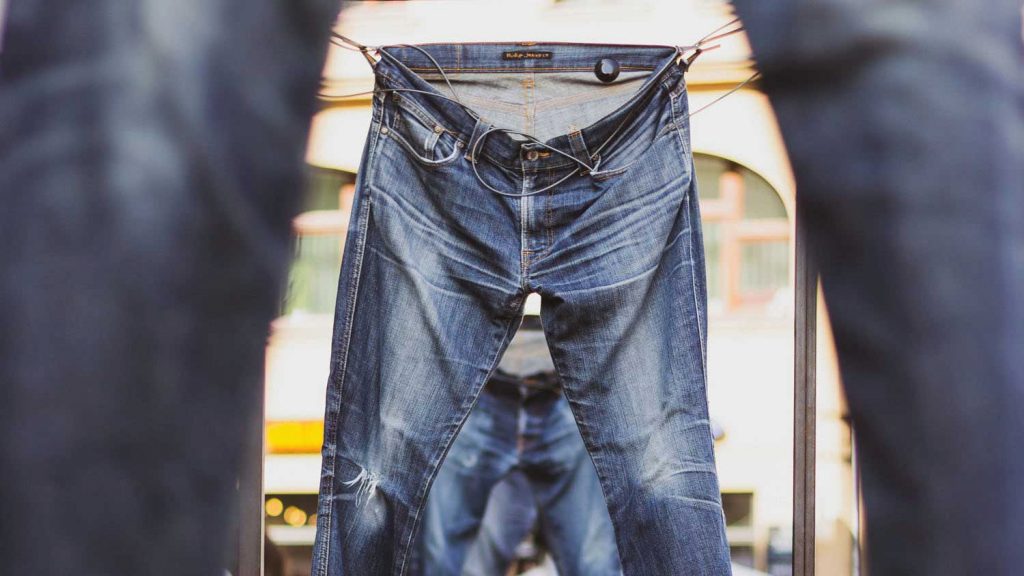
Denimde kullanılan kimyasallar ve çevresel etkiler
Denim terbiyesinde kullanılan kimyasallar, çevresel etkileri açısından dikkatle ele alınmalıdır. Başlıca kullanılan kimyasallar şunlar:
- Sodyum hidroksit (kostik): Lifleri şişirerek boya alımını artırır.
- Potasyum permanganat: Eskitme ve renk açma işlemlerinde yaygındır ancak toksiktir.
- Hipoklorit (çamaşır suyu): Ağartma işlemleri için kullanılır, çevre ve sağlık açısından risklidir.
- Enzimler: Daha çevreci alternatifler olarak kullanılır, selüloz yapısını bozarak yumuşatma ve taşlama efekti sağlar.
- Sentetik taşlar (perlit, selülozik taşlar): Geleneksel pomza taşına alternatif olarak geliştirilmiştir.
Bu kimyasalların arıtılmadan doğaya salınması; su kaynaklarında toksisite, biyoçeşitlilik kaybı ve insan sağlığı üzerinde ciddi etkiler oluşturabilir. Özellikle gelişmekte olan ülkelerde çevre yönetimi ve atık su arıtma sistemleri yetersiz olduğunda denim üretimi ciddi çevresel sorunlara yol açabilir.
Dünyada ve Türkiye’de denim sektörü
Küresel pazarda denim: Denim üretimi ağırlıklı olarak Asya ülkelerinde yoğunlaşmış durumda. Çin, Bangladeş, Pakistan ve Hindistan dünyanın en büyük denim üreticileri arasında yer alıyor. Avrupa ve Amerika ise daha çok nihai ürün ithalatçısı konumunda.
Türkiye’de denim: Türkiye, kaliteli pamuk üretimi, teknik bilgi birikimi ve Ar-Ge yatırımlarıyla denim sektöründe güçlü bir oyuncudur. Denim kumaş üretiminde dünyanın en büyük beş ülkesinden biri olan Türkiye, aynı zamanda sürdürülebilir üretim süreçleri konusunda da öncü uygulamalara imza atmaktadır. İstanbul, Denizli, Kahramanmaraş ve Gaziantep gibi şehirler bu alanda önemli üretim üsleridir.
Yeni teknolojiler ve sürdürülebilir uygulamalar
Sektör, çevresel etkileri azaltmak için son yıllarda pek çok inovasyona yöneldi. Öne çıkan bazı gelişmeler şunlardır:
- Ozon Teknolojisi
Ağartma işlemlerinde kimyasal kullanımını azaltmak için geliştirilmiştir. Ozon gazı, su kullanılmadan açık renk efektleri yaratabilir.
- Lazer Teknolojisi
Manuel taşlama ve zımpara işlemlerine alternatif olarak geliştirilen bu teknolojiyle, kumaşa lazer ışını ile istenilen eskitme efekti verilebilir. İş güvenliği açısından da avantajlıdır.
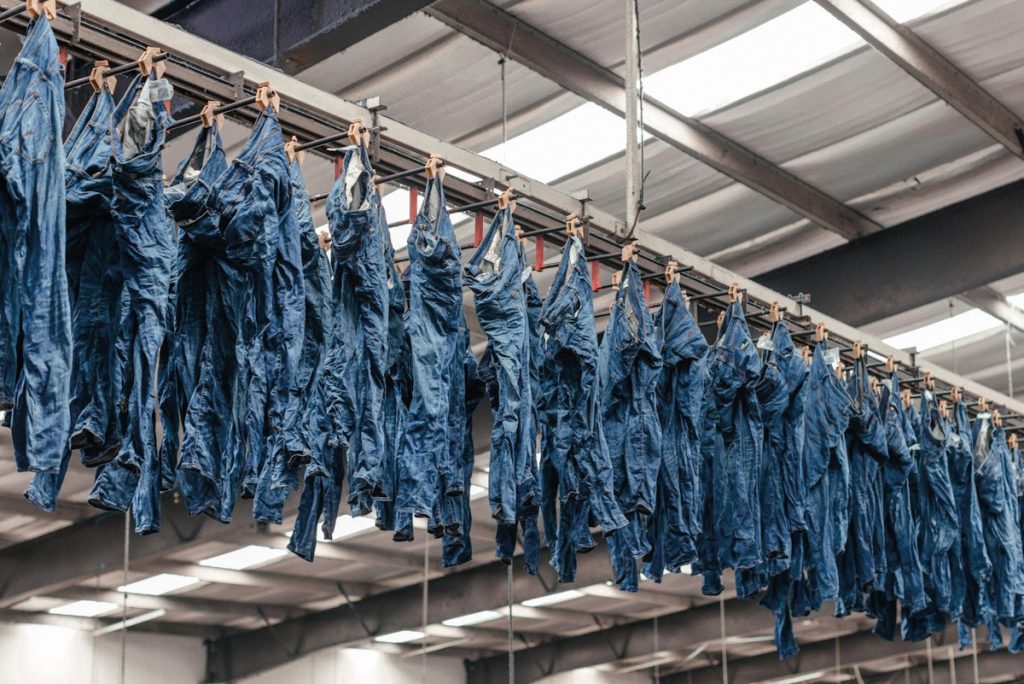
- Enzim Bazlı Yıkama
Doğada çözünebilen enzimlerin kullanımı, hem su tüketimini azaltır hem de kimyasal yükü hafifletir.
- E-flow ve Nanobubble Sistemleri
Kimyasalların mikro düzeyde kumaşa aktarılmasını sağlar, su ve enerji tüketimini ciddi oranda düşürür.
- Geri Dönüştürülmüş Lif Kullanımı
Pamuk atıklarının yeniden kullanılmasıyla hem hammaddede tasarruf sağlanır hem de karbon ayak izi azaltılır.
Geleceğin denimi: Akıllı, etik ve eko-tasarım odaklı
Yeni kuşak tüketiciler, yalnızca şık değil, aynı zamanda çevreci ve etik olarak üretilmiş ürünleri talep ediyor. Bu durum, denim üreticilerini “temiz üretim”, “şeffaf tedarik zinciri” ve “eko-etiketleme” gibi konularda sorumluluk almaya zorluyor. Aynı zamanda dijital ikiz teknolojisi, 3D simülasyon, yapay zekâ destekli kalite kontrol sistemleri gibi dijital dönüşüm uygulamaları da denim sektörünün geleceğinde önemli rol oynayacak.







